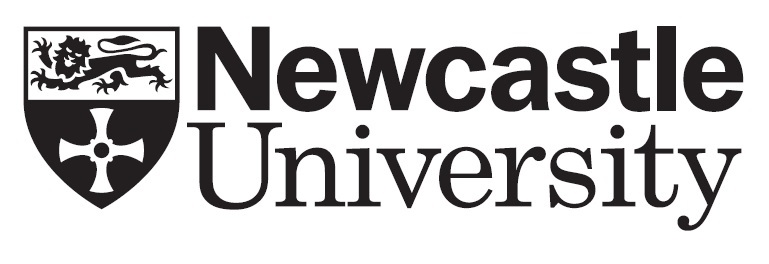Toxic Masculinity (Classical to Contemporary)
Carol Richardson, University of Edinburgh
Lucy Weir, University of Edinburgh
Performative acts of ritualised violence (purification and mortification, torture and execution) are usually given visual form to justify their deterrent effect. The aestheticisation of violence in this context reflects a complex individual and/or collective desire for absolution – positing the body as a site of ritual sacrifice, sado-masochistic manipulation and, ultimately, spiritual sanctification.
Masculinity is, we are repeatedly told, enmeshed in a perpetual state of crisis: the destabilising of patriarchal norms set in motion by feminist movements of the 1960s and 1970s is continually restated in contemporary debates around toxic masculinity and issues of privilege. It is perhaps unsurprising that the rhetoric of populist, right-wing politics consistently returns to this dual anxiety, lamenting the twin evils of terrorism and feminism.
In considering the lengthy and global history of public violence, we are led to question the motivation of such actions. Are these simply criminal acts that have been explained away by commentators, historians and journalists intent on emotive and sensationalist institutional and collective narrative by means of which one group defines itself in opposition to another? More ‘polite’ societies (academies, churches, lodges, orders and clubs) might use subtler means of group formation, but they are nevertheless exclusive and illusive.
This session will explore the intersection of spectacle and suffering in relation to issues of gender, especially the notion of toxic masculinity. We invite contributions that are as inclusive as possible, explicitly calling for papers from medieval to the contemporary, and especially looking for broad international range.
Speakers
Delacroix’s Misogyny
Allison Leigh (University of Louisiana at Lafayette)
Greek/Russian Heroes: Classical nudes by Andrei Ivanov
Weronika Malek-Lubawski (University of Southern California)
Regenerating Italian Masculinity after the First World War: Gabriele D’Annunzio and the Futurists during the 1919 occupation of Fiume (Rijeka)
Ana-Maria Milčić (The Courtauld Institute of Art)
Redefining Public Space, Activism and Feminist Art in Pakistan under Zia-ul-Haq’s Islamisation Regime
Amina Ejaz (National College of Arts Lahore)
Toxic Coercions: Masculinity and the intimate violence of body art
Kristen Carter (Florida Southern College)
‘A Kind of Love-as-Violence, and Violence-as-Love’: Jenkin Van Zyl’s Looners (2019), gendered violence and pleasure in performance art
Harriet Curtis (De Montfort University)
Click here to download this session's abstracts or view below
Delacroix’s Misogyny
Allison Leigh (University of Louisiana at Lafayette)
Although a handful of scholars have speculated that Eugène Delacroix may have had misogynistic tendencies, the exact nature of the French Romantic painter’s attitudes towards women have not been clearly established. Hints at Delacroix’s negative views on the opposite sex can be found scattered in contemporary scholarship – from Anne Larue’s quip that the artist made misogynistic comments when visiting a harem in Algeria to Joan DelPlato’s outright characterisation of the artist as ‘Delacroix the misogynist’. Such recent assessments are bolstered by those of his contemporaries; no less an authority than Charles Baudelaire declared that Delacroix had ‘a very insulting theory [une théorie bien injurieuse]’ of women and that he viewed members of the female sex as only worthy of attention as objects of art. The artist’s own journals contain numerous references to his sexual escapades and he repeatedly refers to even women he was romantically involved with as ‘ugly’ and ‘feeble’, while keeping meticulous accounts of payments he made to models for copulation in addition to posing. Despite this plethora of details concerning the artist’s private life, however, no scholarly account exists which assesses the reminiscences of Delacroix’s contemporaries in tandem with his journals and paintings to fully reconstruct the varying dimensions of the artist’s staunchly traditional masculinity. Degrading, hostile and even outright abusive attitudes towards women were not uncommon in the 19th century, but Delacroix’s paintings figure women constantly as objects of sadistic torment and gruesome death, exceeding even the harshest of dominant dialogues surrounding gender roles in the period.
Greek/Russian Heroes: Classical nudes by Andrei Ivanov
Weronika Malek-Lubawski (University of Southern California)
This paper analyses two paintings by Andrei Ivanov, The Heroism of a Young Kievan at the Siege of Kiev (1810) and Prince Mstislav defeating Rededya (1812) in the context of Russian classicism and military associations of male bodies in Russian imperial art. The paintings depict scenes from Russian folktales, but aesthetically they resemble the European classical canon, which was used to depict allegories or scenes from Greco-Roman mythology. Ivanov followed the goals of his contemporaries to simultaneously imitate the ‘high art’ of Western Europe, and to find ways to depict Russian national stories and various ethnicities in narrative art. His paintings are also connected with the Russian tsars’ political aspirations to position themselves as the heirs to the Byzantine Empire and Greek culture; the trend begun by Catherine the Great in the 1790s.
In Ivanov’s paintings, in which a Russian hero triumphs over a ‘barbarian’ enemy, the nude, classicising male body becomes a political and narrative device. It conveys folk stories with a national moral, embodies the military aspirations of imperial Russia, and associates Russian culture and national identity with a Greek ideal. I analyse the historical circumstances, which enabled the creation of Ivanov’s painting, such as Catherine the Great’s expansion of the Empire and the later threat of Napoleon. In the mid-19th century, that kind of history painting would already be considered dated. In the 1810s, however, Ivanov took part in importing classicism to Russia, and in creating a new visual language for a multinational empire with military ambitions.
Regenerating Italian Masculinity after the First World War: Gabriele D’Annunzio and the Futurists during the 1919 occupation of Fiume (Rijeka)
Ana-Maria Milčić (The Courtauld Institute of Art)
The Italians contributed to winning the First World War and suffered huge losses of people and resources but did not gain all of the territories promised by the Allies in return for entering the conflict in 1915. The famous Italian war hero and poet, Gabriele D’Annunzio referred to this unfulfilled agreement as one of ‘mutilated victory’. This was mapped onto the ‘regeneration myth’, a key aspect of Italian politics resting on the notions of rebirth. The annexation of the city of Fiume (Rijeka, in present-day Croatia) had been an essential element of Italian foreign policy – in 1919, D’Annunzio occupied the city, and Filippo Tommaso Marinetti arrived to show his support. Scholarship using as primary resources the archives of the male military elite and Marinetti’s diary concludes that D’Annunzio’s Rijeka was a place of sexual freedom and emancipation.
Challenging such claims, this paper looks into D’Annunzio’s rhetoric and Marinetti’s work The Poem of Fiume (The University of Chicago Press, 2017) where the narrative of mutilation and eroticism are superimposed on allegorical representations of Fiume as a female figure. Similarly, illustrators from a Croatian satirical magazine Koprive put anthropomorphised nations through a series of violent acts. Juxtaposing these examples with records on illegal prostitution and diaries of women living in the city during the occupation reveals that although the political narrative revolved around female characters, women were pushed out of the public sphere. Moreover, the bodies of both real women and allegorical figures were presented as having ‘regenerating’ qualities and become a place of exercising military masculinity and the Futurist eroticisation of warfare.
Redefining Public Space, Activism and Feminist Art in Pakistan under Zia-ul-Haq’s Islamisation Regime
Amina Ejaz (National College of Arts Lahore)
The effects of Zia-ul-Haqʼs Islamisation policy implemented in 1979 reverberates today in Pakistani women’s daily life, public space and visual culture, which has been altered during these years. The implementation of the Hudood Ordinances in 1979 irrevocably changed the way women perceived public space and activism. This paper is an attempt to examine the challenges that women artists and activists are beset with today, by revisiting the history of Islamisation, and also to explore the nuances of feminist art that was a byproduct of Zia-ul-Haq’s draconian regime. Furthermore, the response of intellectuals and activists in public spaces in the 1980s plays a vital role to deconstruct Pakistani women’s activism and their position in a later fundamentalist public sphere. Pertinent issues regarding the complex relationship between these agencies arise from the dictatorship of the 1980s, which need to be teased out in order to cognise the nuances of the public space and activism. The birth of an activist group, the Women’s Action Forum (WAF), in 1981 and the creation of the first ever women’s manifesto by sixteen female artists resisted and combated the hegemony of Shariah Law that relegated even further the position of Pakistani women already oppressed. Therefore, this paper is an investigation of how such platforms, women artists and activists crystallised the concept of feminism in Pakistan.
Toxic Coercions: Masculinity and the intimate violence of body art
Kristen Carter (Florida Southern College)
Themes of distrust, paranoia, darkness and cynicism pervade the art of the early 1970s. As the political upheavals of the 1960s gave way to the harsh realities of the 1970s – marked by a distrust in the US government, economic depression, political backlash and social breakdown – many artists began engaging in acts of radical inwardness while exploring repressive forms of behaviour at the most basic and intimate levels of human consciousness. Some of the most incisive and problematic critiques appear in the rise of body art in the 1970s, namely in Vito Acconci’s performances between 1969 and 1976. By examining signs of criminality, aggression and coercion in works such as Following Piece (1969), Pryings (1971) and Theme Song (1973), this paper describes and critiques how Acconci used the female form and psychological experience as material supports. From here, my paper not only recasts different tactics of masculine coercion and female suffering as difficult meditations on the violence of abstraction (psychic, aesthetic, technocratic and otherwise), but it also locates Acconci’s performances in their historical context. When set within a seedy and broken New York City, and amid the immediate histories of civil rights and the women’s liberation movement, Acconci’s work gives form to mounting anxieties apropos the perverse effects of alienation and a manifest loss of control. Ultimately, by taking Acconci as a critical point of departure, this paper analyses how certain histories of body art in the 1970s help expose and historicise residual if not contemporary notions of toxic masculinity, both then and now.
‘A Kind of Love-as-Violence, and Violence-as-Love’: Jenkin Van Zyl’s Looners (2019), gendered violence and pleasure in performance art
Harriet Curtis (De Montfort University)
Featured in the Hayward Gallery exhibition ‘Kiss My Genders’, British artist Jenkin Van Zyl’s epic film Looners (2019) depicts a fantastical ritual of violence and abandonment in a complex of decaying film sets in the Atlas Mountains. Described in part as ‘a deliberate queering of the macho history of violence’, the film addresses ‘the violence that is regularly committed against non-conforming bodies’, and seeks to reinstate pleasure and bodily excess firmly within the celebratory, bacchanalian realm (Hayward 2019). However, the film also speaks to the work of male performance artists in the 1970s and 1980s – such as Paul McCarthy and John Duncan – who explored gender fluidity, (usually heterosexual) sex and bodily excess, in messy (physically and politically), violent and sometimes problematic, troubling and unethical ways. In Duncan’s piece For Women Only (1979), an audience of women are shown pornographic films and then invited into a back room to abuse the artist; in Blind Date (1980), Duncan made a sound recording of a sexual encounter with a female corpse, a piece which he describes as an act of ‘self-torture’ (Duncan 1997). This paper will expand on points of connection and contention between representations of violence and pleasure in Duncan and Van Zyl’s work, and ask how Looners might rehearse or revise a history of gendered or ‘masculinised’ violence whilst seeking to reclaim the agency and autonomy of the body in ways that are ultimately hopeful.
|
|
|
|
|
|
Supported by
Conference Sponsors
![]()
Sponsored by
ASSOCIATION FOR ART HISTORY
![]()
Terms & Conditions
![]()


